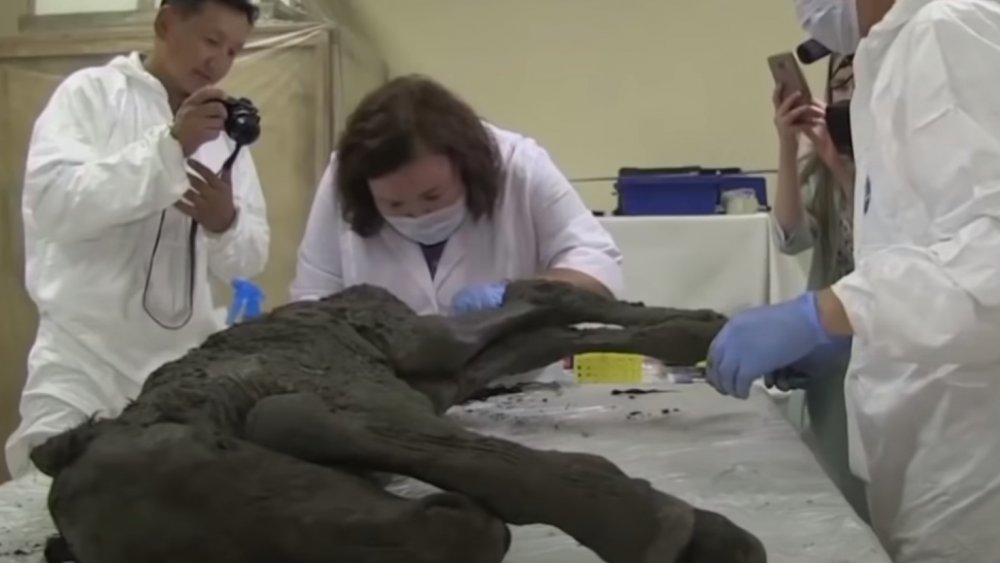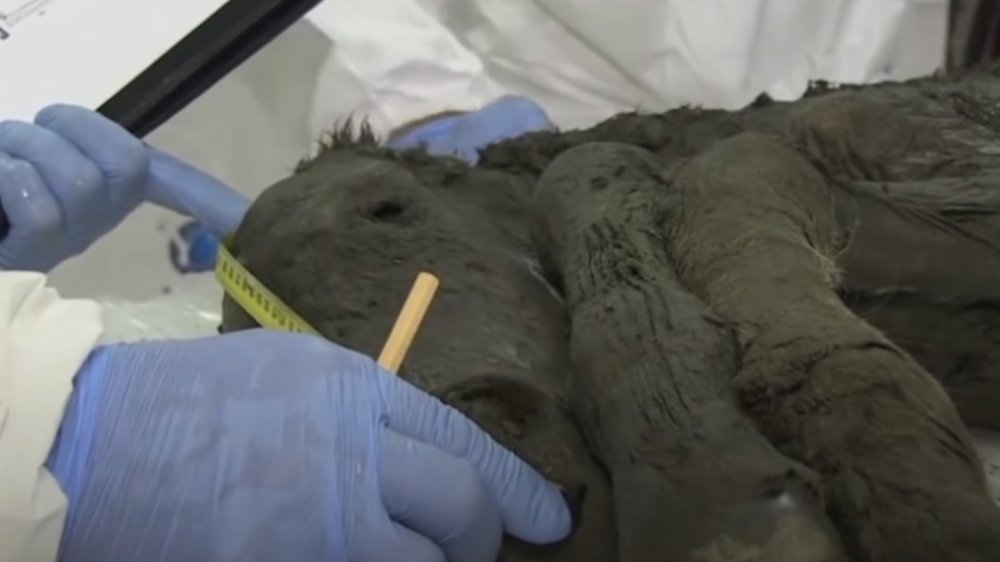Why This 42,000-Year-Old Specimen Is An Eye-Opening Discovery
Let's be honest. It doesn't take much to get paleontology enthusiasts to mess their cargo pants in excitement. In April of 2020, they figured out that the Spinosaurus' tail was a different shape than they'd thought it was and they blew up Twitter like Kanye just released a new album that's not about church. As exciting announcements go, they've been known to cry wolf.
That said, this one's actually pretty cool: in 2018, a group of mammoth tusk hunters were honing their craft in Siberia's Verkhoyansk region, an area with a double scoop of extreme low temperatures and permafrost. The summer months brought an uncharacteristic heatwave which helped to unearth — drumroll — a dead baby horse.
But here's the wild thing. The foal corpse is now estimated to be roughly 42,000 years old. It belongs to a long-extinct species, and its body was so outlandishly well naturally mummified that researchers are calling it "the best preserved Ice Age animal ever found in the world," according to the Siberian Times.
Ancient horse cloning, or, Foal me twice
So how well preserved is this thing? Not only is the creature's fur still largely present and intact, researchers were actually able to extract liquid blood and urine from the specimen. This is exciting for a couple of reasons: the blood allows for the potential to eventually clone the creature, and the urine means they'll be able to drug test it before it starts work at Kohl's.
The foal is believed to have been a baby Lenskaya horse, an extinct breed, which died when it was around 2-weeks-old. It's likely that the creature drowned, as mud and silt were discovered in its GI tract, indicating desperate gulping in its last moments of life. After that, it probably sunk below the water, was covered in mud, and then was preserved by the permafrost. According to a press release from North Eastern Federal University in Yakutsk, scientists are optimistic enough about developing a living replica from active cells in its blood that they've already picked out a female horse to carry a clone of the foal to term.

